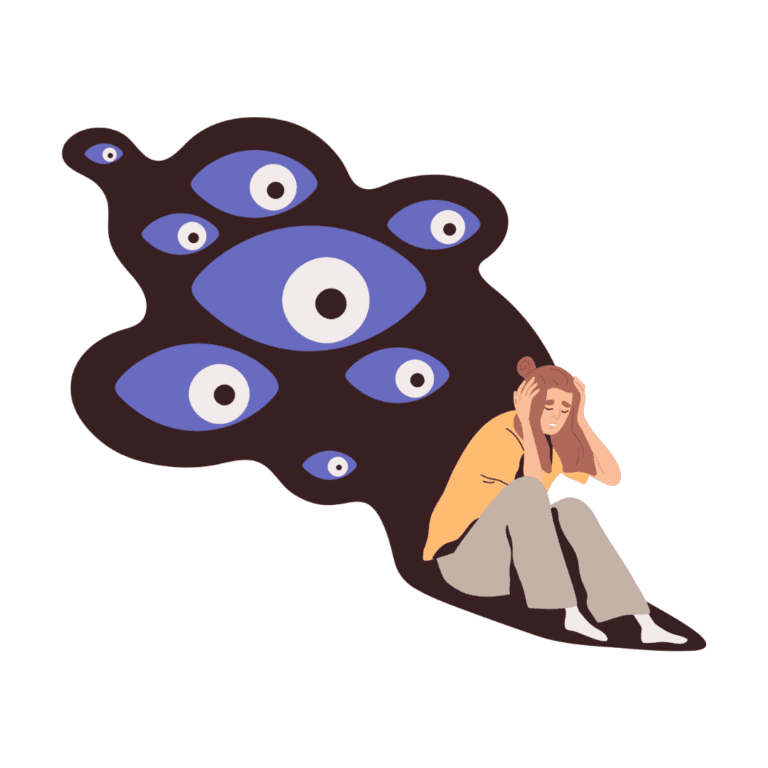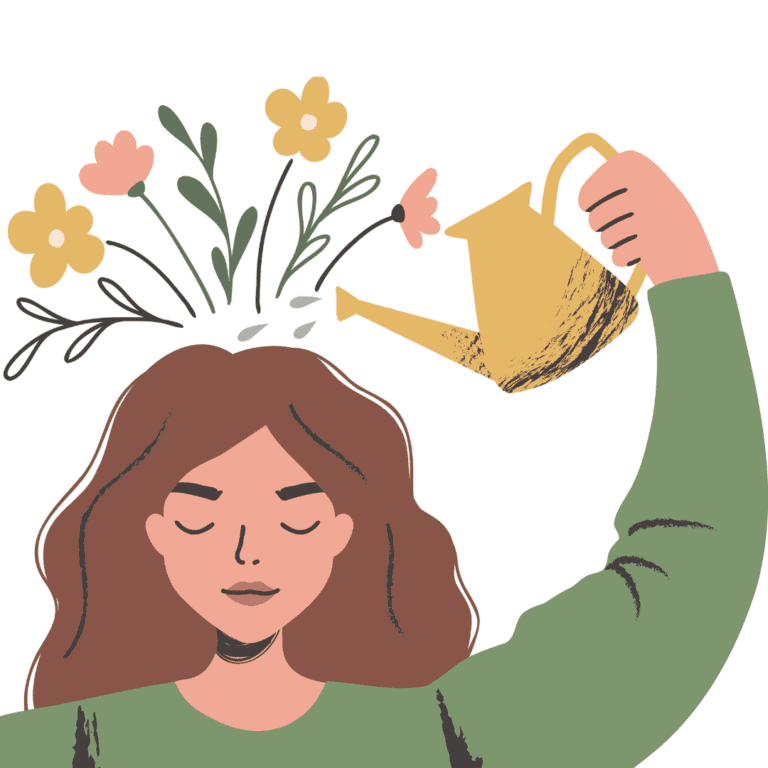Cognitive Behavioral Therapy for Anxiety: How to Calm Your Racing Thoughts
- by Carolina Mancipe
Have you ever found yourself stuck in an endless cycle of “what ifs”? What if I embarrass myself? What if I make the wrong decision? What if something bad happens? Overthinking can feel like a mental hamster wheel—your thoughts keep spinning, but you never actually get anywhere.
For many people, overthinking isn’t just a bad habit; it’s a major driver of anxiety. When your brain constantly scans for potential problems, it convinces you that something must be wrong—even when there isn’t. This fuels worry, self-doubt, and exhaustion, making anxiety even worse. But the good news? You don’t have to stay trapped in this cycle.
Cognitive Behavioral Therapy (CBT) offers practical ways to break free from overthinking and take back control of your mind. Let’s explore how.

How Overthinking Triggers Anxiety
Overthinking tends to create a chain reaction that intensifies anxiety. Here’s how it works:
You Have a Worrying Thought – A small concern pops into your head. Maybe it’s about work, relationships, or something in the future.
You Try to Analyze It Endlessly – Instead of letting it go, you start dissecting every possible outcome, searching for certainty.
Your Brain Treats It as a Threat – The more you focus on the thought, the more your brain believes it’s something serious.
Anxiety Increases – Your body reacts with stress: a racing heart, restlessness, or trouble focusing.
You Get Stuck in the Cycle – The anxiety makes you worry even more, keeping you locked in the loop of overthinking.
This pattern can make even small concerns feel overwhelming, leading to avoidance, procrastination, or sleepless nights.
How CBT Helps You Break Free from Overthinking
Cognitive Behavioral Therapy (CBT) is one of the most effective ways to manage anxiety and overthinking. It works by helping you recognize unhelpful thought patterns and replace them with healthier ways of thinking. Here’s how:
1. Identifying and Challenging Negative Thoughts
CBT teaches you to step back and question the thoughts fueling your anxiety. For example:
Overthinking Thought: “If I make a mistake, everyone will judge me.”
CBT Response: “Is that really true? Has that happened before? What’s the worst that could actually happen?”
By challenging your thoughts instead of accepting them as facts, you start breaking the cycle of anxiety.
2. Practicing Thought Distancing
Instead of believing every anxious thought, CBT helps you observe your thoughts like an outsider. A useful technique is to say, “I’m having the thought that…” before repeating your worry. This simple shift helps you separate yourself from your thoughts, making them feel less overwhelming.
3. Using Mindfulness to Stay Present
Many anxious thoughts focus on the past (“I shouldn’t have said that”) or the future (“What if something goes wrong?”). CBT encourages mindfulness—bringing your focus back to the present. Simple techniques like deep breathing, body scanning, or the 5-4-3-2-1 grounding method can stop overthinking in its tracks.
4. Taking Action Instead of Overanalyzing
Overthinking often leads to paralysis—spending so much time analyzing a problem that you never take action. CBT helps shift your focus from “what if” to “what now?” Small steps, like making a decision and moving forward, help reduce anxiety and build confidence.
Positive Self-Talk and Reframing
Your internal dialogue can significantly impact your anxiety levels. Practice replacing negative thoughts with more realistic and positive affirmations. This is known as “cognitive restructuring” and is a core technique in CBT.
Examples of Reframing Negative Thoughts:
- ol]:!pt-0 [&>ol]:!pb-0 [&>ul]:!pt-0 [&>ul]:!pb-0″ value=”2″>Reframe “I will mess up and embarrass myself,” to “I can handle whatever happens, and mistakes are a part of learning and growing.”
Regular Use of Positive Affirmations:
- ol]:!pt-0 [&>ol]:!pb-0 [&>ul]:!pt-0 [&>ul]:!pb-0″ value=”2″>Repeat these affirmations often, especially before and after social interactions

Seeking Professional Help
While self-help strategies are powerful, working with a trained therapist can offer deeper guidance and support. If overthinking and anxiety are interfering with your daily life, a CBT therapist can help you develop personalized strategies to regain control.
Overthinking may feel like an unstoppable force, but with the right tools, you can calm your racing thoughts and find relief from anxiety. By learning to challenge negative thinking, stay present, and take action, you can step off the mental hamster wheel and start living with greater peace and confidence.
If you’re ready to break free from the cycle of overthinking, CBT is a great place to start. You deserve a calmer mind and a more peaceful life.
SHARE THIS POST

Carolina Mancipe
I’m a Registered Psychotherapist (Qualifying). I practice from a holistic approach to help my clients navigate life’s ebbs and flows. One of the primary ways I support my clients is by helping them develop a deeper sense of self-awareness and cultivate a more compassionate and present relationship with themselves. By doing so, they can tap into their own healing power, process trauma, heal, grow, and make positive changes.